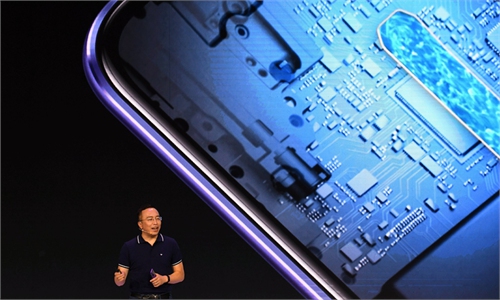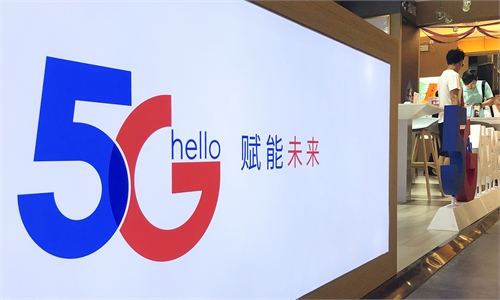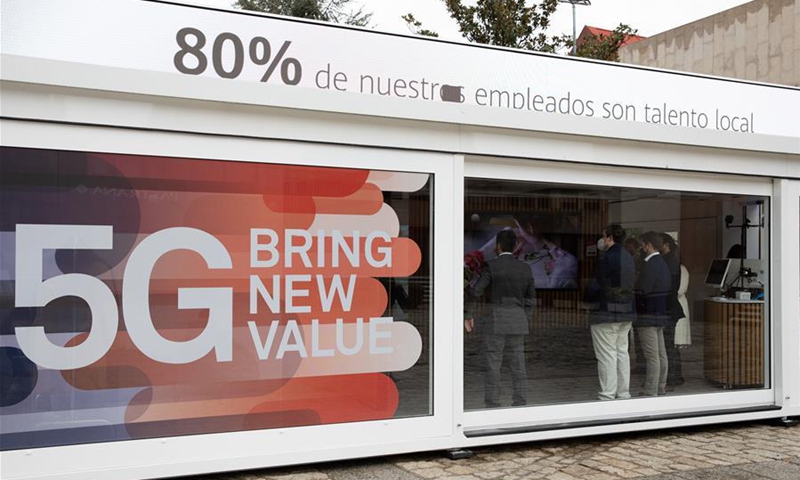
People learn about Huawei 5G products during a Huawei roadshow in Madrid, Spain, Nov. 5, 2020. Huawei, China's leading tech company, launched a roadshow here on Thursday to provide visitors with hands-on experience of its 5G technology. (Xinhua/Meng Dingbo)
Huawei said on Tuesday that it will start to charge royalties to 5G smartphone makers using its patented 5G technology, which will provide a "reasonable percentage royalty rate" of the handset's selling price, with per unit royalty cap at $2.50.Amid declines in its other businesses due to US sanctions, the firm said the revenue from the intellectual property rights (IPR) will not become its main source of income, as income from terminal products and services will still be its main focus area to generate profits.
For every multi-mode 5G smartphone, Huawei will provide a reasonable percentage royalty rate of the handset selling price, and a per unit royalty cap at $2.50, Jason Ding, head of Huawei's IPR department, said when releasing a new white paper on innovation and IPR on Tuesday.
Huawei is estimated to receive about $1.2-1.3 billion in revenue from patent licensing between 2019 and 2021, Ding said.
Huawei Chief Legal Officer Song Liuping also said that Huawei will negotiate the exact 5G patent royalties with firms including Apple and Samsung.
Huawei's intellectual property deployment plan is a global one, and it does not distinguish among countries. US companies can also get authorized and pay, Song said.
"The charge is just another normal approach as Huawei is now the largest 5G patent holder," Jiang Junmu, chief writer at Chinese telecom industry news website c114.com.cn, told the Global Times on Tuesday.
Huawei has 3,007 declared 5G patent families, the most of any company in the world, according to a report from CNBC, citing analysis by intellectual property research organization GreyB.
Qualcomm, Ericsson, Nokia, Samsung and other major patent holders have also benefited from patent authorizations and charged royalties. Compared with its counterparts, Huawei's charge is relatively lower.
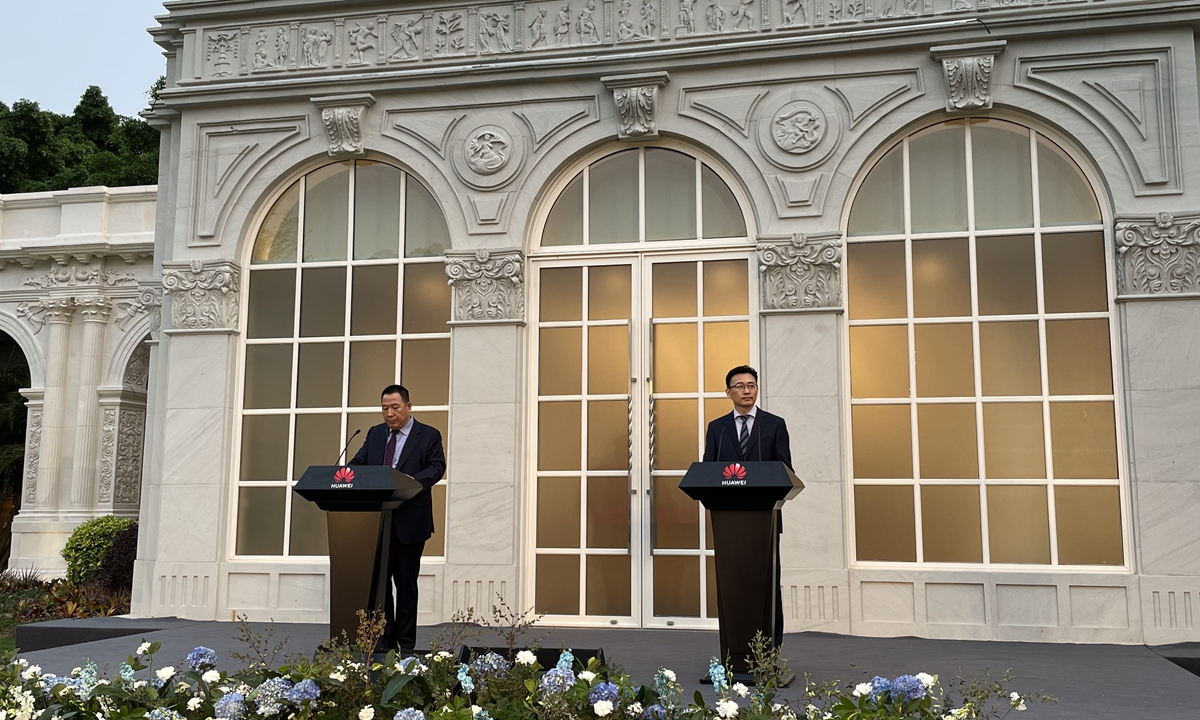
Huawei Chief Legal Officer Song Liuping (Left) and Jason Ding, head of Huawei's IP department, seen at the launch event in Shenzhen, South China's Guangdong Province, on Tuesday. Photo: Shen Weiduo/GT
During the launch, Huawei also reiterated its commitment to innovation amid an intense US crackdown, while also again calling for cooperation and openness amid what it said was "fragmentation" in global standards.
The new white paper focuses on Huawei's history in innovation and IPR management prior to 2010, and includes data and milestones related to its investment and research and development (R&D), that spans back to the 1990s.
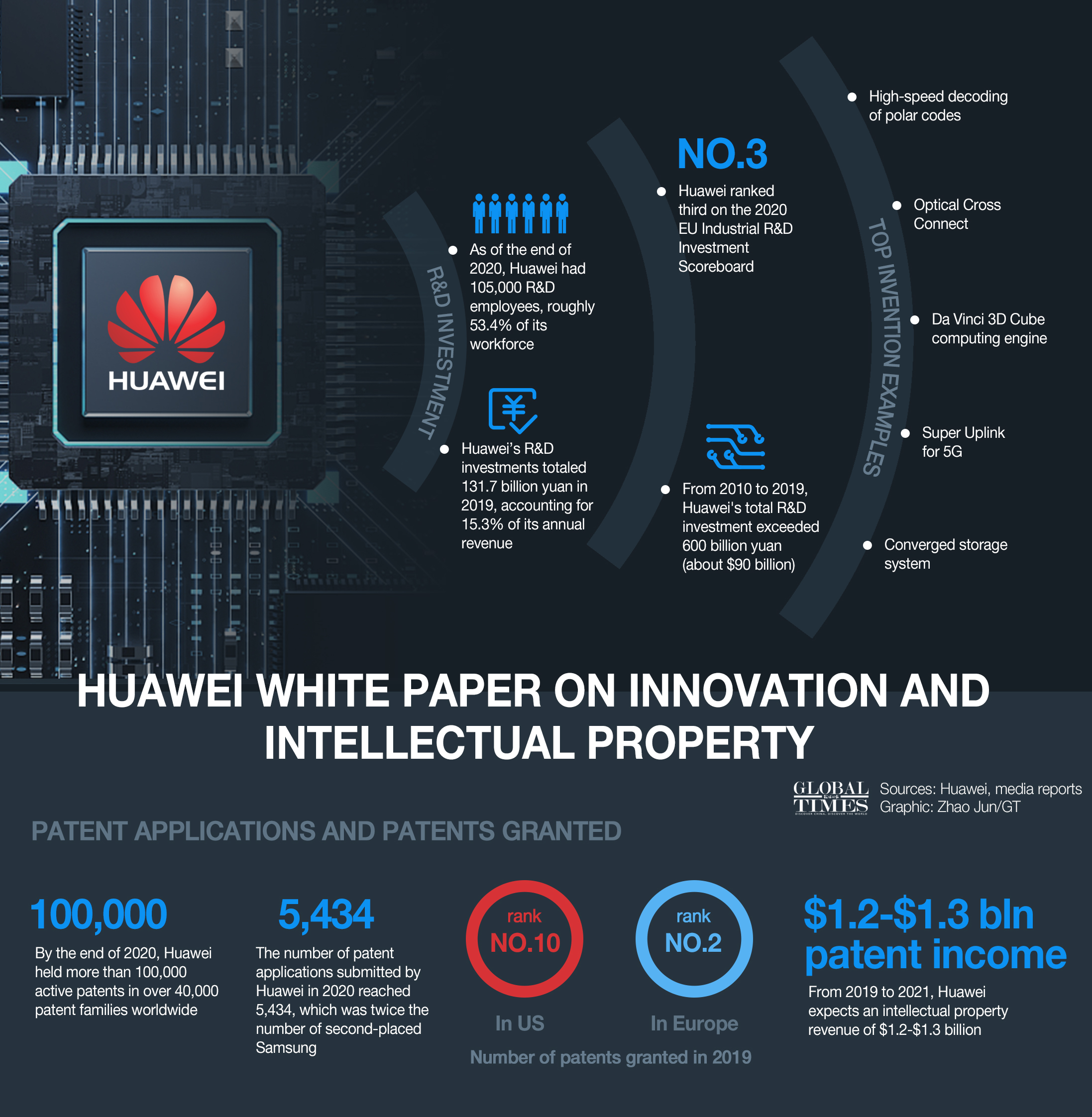
Huawei White Paper on Innovation and Intellectual Property. Graphic: GT
Huawei states in the paper that it has become one of the world's largest patent holders through sustained investment in innovation. By the end of 2020, Huawei held over 100,000 active patents in more than 40,000 patent families worldwide.
Huawei filed its first patent application in China in 1995, and its first patent application in the US in 1999.
In 2008, the World Intellectual Property Organization listed Huawei as No.1 in terms of number of patent applications filed under the Patent Cooperation Treaty (PCT) for the first time.
In 2019, Huawei ranked No.2 in Europe and No.10 in the US in terms of the number of patents granted. Huawei is also the largest patent holder in China.

